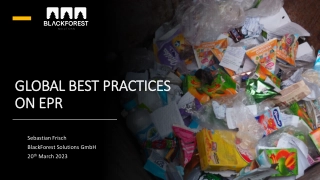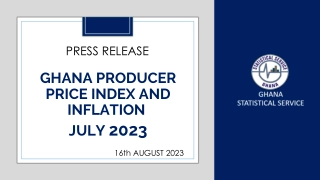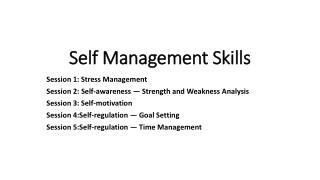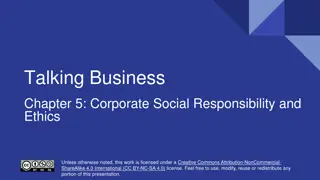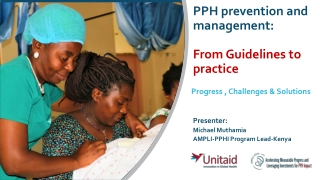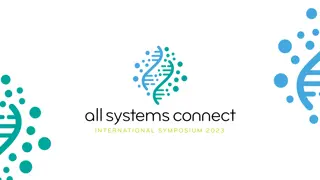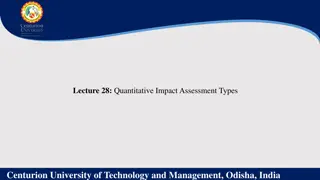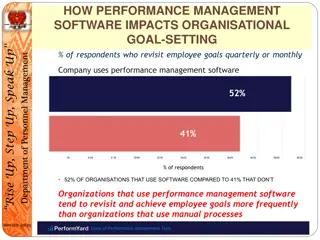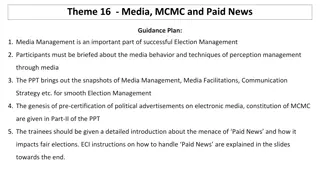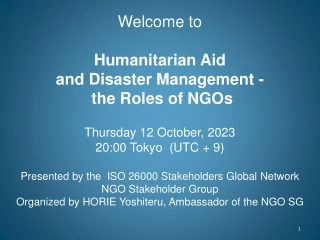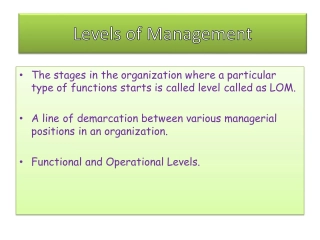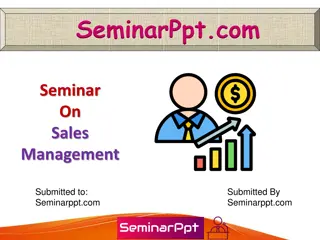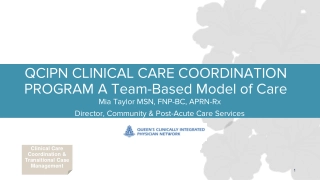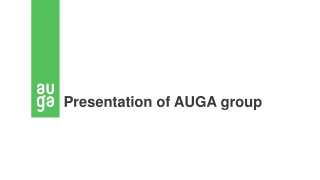The Impact of Extended Producer Responsibility on WEEE Management in Kenya
Extended Producer Responsibility (EPR) plays a crucial role in managing Waste Electrical and Electronic Equipment (WEEE) by shifting the responsibility of end-of-life product disposal to producers. In Kenya, proposed EPR categories cover a range of products from packaging to non-packaging items, aiming to increase collection and recycling rates while reducing hazardous waste in landfills. Implementing EPR promotes eco-design, resource efficiency, and sustainable practices, creating new opportunities in the waste management sector.
Download Presentation
Please find below an Image/Link to download the presentation.
The content on the website is provided AS IS for your information and personal use only. It may not be sold, licensed, or shared on other websites without obtaining consent from the author. Download presentation by click this link. If you encounter any issues during the download, it is possible that the publisher has removed the file from their server.
Presentation Transcript
EXTENDED PRODUCER RESPONSIBILTY AND ITS ROLE ON WEEE MANAGEMENT. DOES IT MATTER? A CASE OF KENYA, EAST AFRICA This Photo by Unknown author is licensed under CC BY. Sarah Njau
A policy approach that places the responsibility for the disposal and management of end-of-life products on the producers. What is EPR The objective of EPR is to encourage producers to design products that are easier to recycle and dispose of, and to reduce the environmental impact of products at the end of their life cycle.
Packaging for non-hazardous products (plastics, papers, aluminium, composite, glass and carton). Hazardous products packaging (Industrial chemicals, oil and lubricants, pharmaceuticals, agrochemicals, veterinary, paints and solvents) and agricultural films Kenya s proposed EPR Categories Electrical, Electronic Equipment, Mercury Auto Switches, thermostats, Battery and Accumulators End of life motor vehicles, automobiles, aircrafts, locomotives Non packaging items (Plastics, glass, paper, cardboard), Furniture (except wooden, metallic), Rubber and Tyre
The increase in the collection and recycling of WEEE, which reduces the amount of hazardous waste sent to landfills introduction of EPR would lead to an Producers would also start designing products that cost and complexity of managing WEEE. Why it matters are easier to recycle, which reduces the Create employment opportunities in the waste management sector, particularly in the collection and recycling of WEEE.
Encouraging appliances minimize pollution. eco-design that in electrical are cost-effective and Encouraging responsible use of electronics. Encouraging electronic products reuse and refurbishment of Encouraging the use of non-toxic materials and manufacturing processes
Improving material inputs and energy consumption resource efficiency in Reducing waste treatment pollution from production and Creation opportunities and a recycling industry niche. of new profitable business A that consumption. move promotes towards sustainable circular economy production and
Lack of awareness among consumers about the importance of responsible waste management. Challenges of EPR Implementation Lack of infrastructure and capacity for waste management in many parts of the country. Lack that regulations. of enforcement producers mechanisms comply to the ensure EPR with
EPR has the potential to play an important role Kenya However, depend regulatory engagement, appropriate recycling infrastructure. in improving and the on WEEE countries success range enforcement, and management in EPR factors, stakeholder availability in other East policies including Africa. will of of Conclusion a the of


